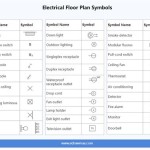How To Make Homemade Fertilizer For Indoor Plants
Maintaining thriving indoor plants often requires supplemental feeding in the form of fertilizer. While commercially produced fertilizers are readily available, homemade alternatives offer a cost-effective and environmentally conscious approach to nurturing indoor greenery. Using common household materials, it is possible to create nutrient-rich solutions that support healthy growth and vibrant foliage.
The inherent advantage of homemade fertilizers lies in their sustainability. Oftentimes, these fertilizers repurpose materials that would otherwise be discarded as waste. Utilizing coffee grounds, eggshells, and vegetable scraps not only provides essential nutrients to plants but also reduces landfill contributions. This sustainable approach aligns with environmentally responsible gardening practices.
Furthermore, homemade fertilizers grant greater control over the nutrient content. Unlike commercially formulated fertilizers, homemade recipes can be adjusted to meet the specific needs of different plant species. Certain plants may require higher concentrations of nitrogen for leafy growth, while others benefit from increased phosphorus for flowering. Through careful formulation, homemade fertilizers can be tailored to optimize plant health and development.
Understanding Plant Nutrient Requirements
Before venturing into homemade fertilizer production, it is crucial to understand the basic nutrient requirements of indoor plants. The three primary macronutrients are nitrogen (N), phosphorus (P), and potassium (K), commonly referred to as NPK. These nutrients play distinct roles in plant physiology.
Nitrogen promotes vegetative growth, stimulating the production of leaves and stems. A deficiency in nitrogen can manifest as yellowing leaves (chlorosis) and stunted growth. Phosphorus supports root development, flower and fruit production, and overall plant vigor. A phosphorus deficiency can lead to poor root growth, delayed flowering, and reduced fruit set. Potassium is essential for water regulation, nutrient transport, and disease resistance. Potassium deficiency symptoms include scorched leaf edges and weakened stems.
In addition to macronutrients, plants also require micronutrients in smaller quantities. These include iron, manganese, zinc, copper, boron, and molybdenum. Micronutrients are involved in various enzymatic processes and contribute to overall plant health. While deficiencies in micronutrients are less common than macronutrient deficiencies, they can still impact plant growth and development.
The specific nutrient needs of indoor plants vary depending on the species, growth stage, and environmental conditions. Researching the specific needs of individual plant varieties is necessary for proper fertilization. General-purpose fertilizers typically contain a balanced ratio of NPK, suitable for a wide range of plants. However, certain plants may benefit from fertilizers with higher concentrations of specific nutrients.
Common Homemade Fertilizer Recipes
Several readily available household materials can be repurposed to create effective homemade fertilizers. These materials offer a range of nutrients and can be combined to create balanced solutions. Here are some popular recipes:
Coffee Grounds Fertilizer:
Coffee grounds are a rich source of nitrogen and also contain phosphorus and potassium. They can be used in several ways. One approach is to sprinkle used coffee grounds directly onto the soil surface around the plant. Over time, the coffee grounds will decompose and release nutrients into the soil. Another method is to brew a weak coffee solution by diluting used coffee grounds with water (approximately 1 part coffee grounds to 4 parts water). This solution can be used to water plants directly.Coffee grounds are slightly acidic, so they are particularly beneficial for acid-loving plants such as azaleas, rhododendrons, and blueberries. However, they can also be used for other plants, as long as the soil pH is monitored regularly. It is important to use only spent coffee grounds, as fresh coffee grounds may be too acidic for some plants.
Eggshell Fertilizer:
Eggshells are primarily composed of calcium carbonate, which is beneficial for plant cell wall development and overall plant structure. They also contain small amounts of other nutrients such as potassium and magnesium. To prepare eggshell fertilizer, rinse the eggshells thoroughly and allow them to dry completely. Once dry, crush the eggshells into a fine powder using a blender or mortar and pestle. The eggshell powder can be sprinkled onto the soil surface or mixed into the potting mix before planting.Alternatively, eggshells can be used to create an eggshell tea. Place the crushed eggshells in a jar and cover them with water. Allow the mixture to sit for several days, stirring occasionally. The water will extract the calcium and other nutrients from the eggshells. The resulting tea can then be used to water plants.
Banana Peel Fertilizer:
Banana peels are a rich source of potassium, which is essential for flowering and fruiting plants. They also contain phosphorus and manganese. To prepare banana peel fertilizer, simply bury banana peels around the base of the plant. As the peels decompose, they will release nutrients into the soil. Another approach is to soak banana peels in water for several days. The resulting banana peel water can then be used to water plants.A faster method involves drying the banana peels, grinding them into a powder, and mixing the powder into the soil. This offers a more concentrated dose of potassium compared to burying the peels whole. Proper drying is crucial to prevent mold growth. Ensure the peels are completely dry before grinding them.
Vegetable Scrap Fertilizer:
Vegetable scraps such as potato peels, carrot tops, and lettuce leaves can be used to create a nutrient-rich compost tea. Place the vegetable scraps in a large container and cover them with water. Allow the mixture to sit for several days, stirring occasionally. The water will extract the nutrients from the vegetable scraps. The resulting compost tea can then be used to water plants. It is important to use only organic vegetable scraps, as pesticides and other chemicals can harm plants.This method may require more attention to odor control, as decomposing vegetable matter can produce unpleasant smells. Ensuring proper ventilation and using a lid on the container can help mitigate this issue. Filtering the tea before application can also prevent clogging of watering cans or spray bottles.
Epsom Salts Fertilizer:
Epsom salts (magnesium sulfate) are a source of magnesium and sulfur, both of which are essential for plant health. Magnesium is involved in chlorophyll production, while sulfur is important for protein synthesis. Dissolve one tablespoon of Epsom salts in one gallon of water and use the solution to water plants every few weeks. Epsom salts are particularly beneficial for plants that are showing signs of magnesium deficiency, such as yellowing leaves between the veins.While Epsom salts can be beneficial, overuse can lead to nutrient imbalances. It's important to use them sparingly and only when there is a clear indication of magnesium deficiency. Regular soil testing can help determine if Epsom salts are necessary.
Application and Considerations
When applying homemade fertilizers, it is important to avoid over-fertilization, which can damage plants. Start with small amounts and monitor the plant's response. The frequency of application will depend on the type of plant, the growing conditions, and the specific fertilizer used. Generally, plants should be fertilized every two to four weeks during the growing season (spring and summer) and less frequently during the dormant season (fall and winter).
It is also important to consider the pH of the soil. Most indoor plants prefer a slightly acidic soil pH of around 6.0 to 6.5. Coffee grounds and other acidic materials can lower the soil pH, while eggshells can raise it. Regular soil testing can help monitor the pH and adjust the fertilizer accordingly.
Homemade fertilizers can sometimes contain inconsistent nutrient levels. Therefore, it's crucial to observe plants closely for any signs of nutrient deficiencies or toxicities. If deficiencies are apparent, additional nutrients can be supplemented. If toxicities are suspected, leaching the soil with water can help remove excess nutrients. Soil testing can provide a more precise assessment of nutrient levels.
Proper storage of homemade fertilizer solutions is also crucial. Compost teas and other liquid fertilizers should be stored in airtight containers in a cool, dark place to prevent spoilage. Dry fertilizers, such as coffee grounds and eggshell powder, should be stored in airtight containers to prevent moisture absorption and mold growth.
Ultimately, the success of homemade fertilizers depends on careful observation, experimentation, and adaptation. What works well for one plant may not work for another. By understanding the nutrient requirements of individual plants and monitoring their response to different fertilizer formulations, it is possible to create effective and sustainable homemade fertilizers that promote healthy growth and vibrant foliage.

How To Make Homemade Fertilizer For Indoor Plants
:max_bytes(150000):strip_icc()/make-your-own-fertilizer-1388159-hero-025e07a9b96840568b5eb5050f4bab10.jpg?strip=all)
How To Make Your Own Fertilizer

11 Diy Homemade Plant Fertilizers With Recipes Gardening

Homemade Fertilizers 10 Diy Options To Fertilize Houseplants Naturally

Food Waste You Can Use As Plant Fertilizer

How To Make Homemade Plant Food Creative Homemaking

Homemade Fertilizers 10 Diy Options To Fertilize Houseplants Naturally

Make A Simple Organic Fertilizer For Healthy Indoor Plants Garden Therapy

Diy Plant Fertilizer For Indoor Plants 5 Recipes To Try

Make A Simple Organic Fertilizer For Healthy Indoor Plants Garden Therapy








